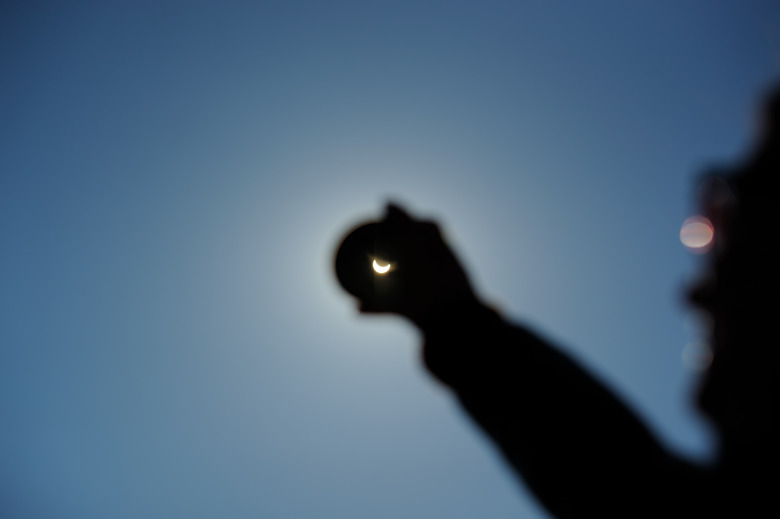Differences & Similarities Between The Lunar & Solar Eclipse
Eclipses are among the most spectacular phenomena easily visible from Earth. Two separate types of eclipses can occur: solar eclipses and lunar eclipses. Although these two types of eclipses are, in some ways, quite similar, they are also two entirely different occurrences.
Eclipses
Eclipses
An eclipse occurs when one celestial object obscures another celestial object. In the case of a solar eclipse, the moon moves between the Earth and the sun, thus obscuring the sun. A lunar eclipse occurs when the Earth moves directly between the sun and the moon. Either type of eclipse can be total or partial. A total eclipse occurs when either the moon or the Earth totally blocks out the sun, while a partial eclipse occurs when only part of the sun or moon is blocked out. Solar eclipses can also be annular, meaning that the moon is at its furthest point in its orbit, where it will not completely block out the sun. A lunar eclipse can also be penumbral, which, in its simplest terms, means that the eclipse shadow is only partial. This type of lunar eclipse can be difficult to observe.
Time of Occurrence
Time of Occurrence
One of the most obvious differences between a solar eclipse and a lunar eclipse is the times at which each can occur. Solar eclipses can only happen during the day, while lunar eclipses only occur during the night. Lunar eclipses can only occur during a full moon. Because of the exact situations that need to occur for an eclipse to happen, they are relatively rare, only happening a few times a year.
Safety
Safety
It is not safe to stare at a solar eclipse. Permanent damage can be done to your eyes if you look at the sun for too long, even during an eclipse. Lunar eclipses, however, are completely safe to view. This is because of the relative location of the sun. During a solar eclipse, the sun is still shining potential harmful light directly at you (even though the moon is in the way), while the light present during a lunar eclipse is entirely light which is reflected off of the moon.
Other Similarities and Differences
Other Similarities and Differences
Lunar eclipses tend to happen significantly more often than solar eclipses, because the moon is closer to the Earth than the sun. The chances of the Earth getting between the sun and the moon is much greater than the moon getting between the sun and the Earth. A solar eclipse was often seen as a bad omen in ancient cultures. Although there are major visual differences, the actual effect of either the sun or moon being blocked out is similar for both types of eclipse. A dark circular shadow (either from the moon or the Earth) slowly moves across the celestial object being eclipsed before disappearing at the end of the eclipse.
Cite This Article
MLA
Black, Michael. "Differences & Similarities Between The Lunar & Solar Eclipse" sciencing.com, https://www.sciencing.com/differences-between-lunar-solar-eclipse-8621006/. 9 March 2018.
APA
Black, Michael. (2018, March 9). Differences & Similarities Between The Lunar & Solar Eclipse. sciencing.com. Retrieved from https://www.sciencing.com/differences-between-lunar-solar-eclipse-8621006/
Chicago
Black, Michael. Differences & Similarities Between The Lunar & Solar Eclipse last modified March 24, 2022. https://www.sciencing.com/differences-between-lunar-solar-eclipse-8621006/
